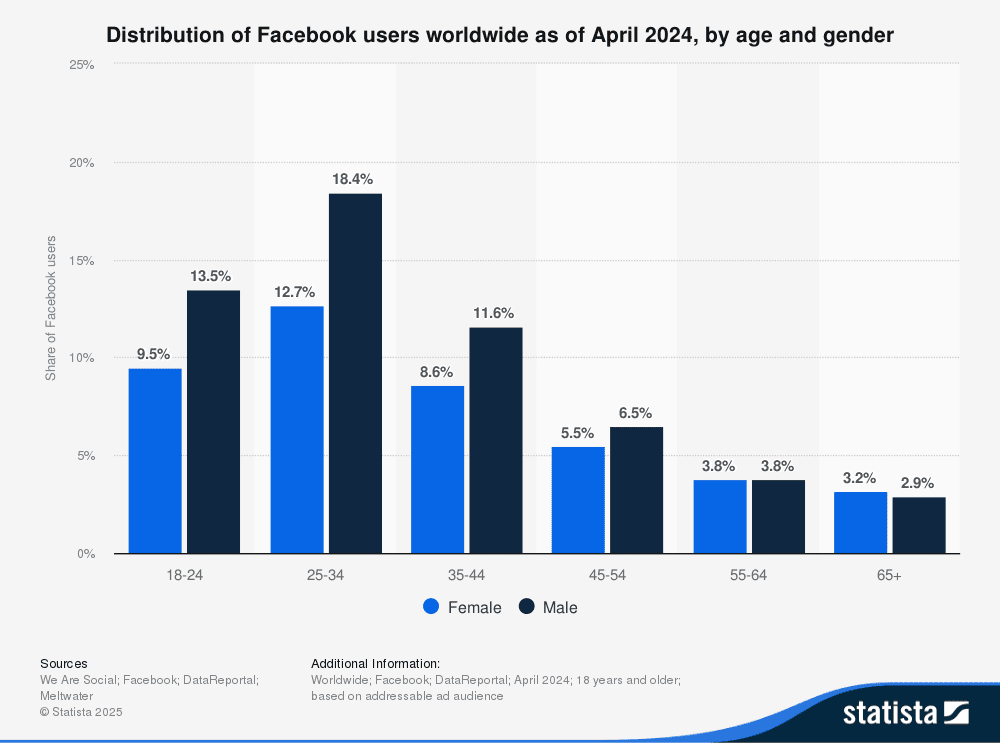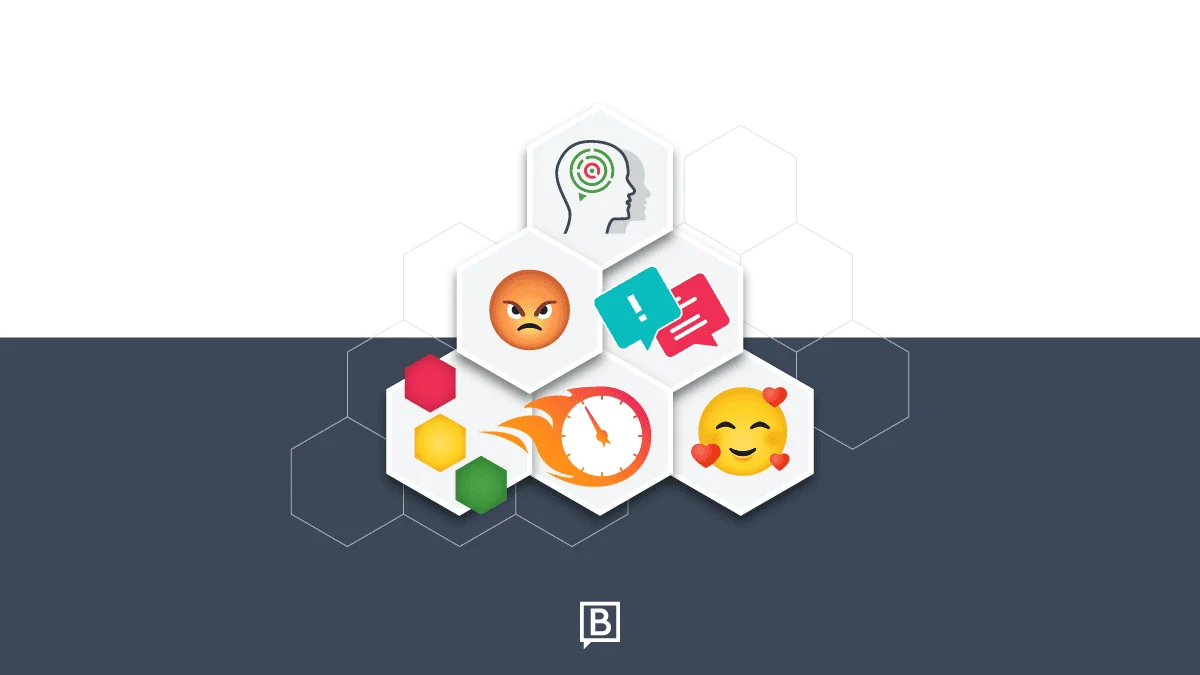Most brands still think social media customer service is about response time.
Whoever replies fastest wins.
It sounds logical. It’s what dashboards measure. It’s what leadership reports “up” the chain of command.
But that’s NOT what matters to customers.
What customers remember is how your reply makes them feel, whether you respect their time, and if you treat them like a person instead of a ticket number. That layer — the emotional layer — is social media customer psychology.
If you understand the psychology behind every comment, DM, and “hey, can someone help?” post, you stop doing damage control in public and start building loyalty in public.
The Hidden Expectations Behind Every Comment
Every “@mention,” angry tag, or late-night DM is more than a complaint.
It’s a test.
The customer is really asking three things:
- Do you see me?
- Will you take ownership?
- Will you treat me like I matter to your brand?
According to Sprout Social’s 2025 social media statistics report, nearly half of consumers now interact with brands on social more than they did just six months ago. And those same consumers expect responses that feel fast and human, not canned.
Roughly 81% of consumers say social media compels them to make spontaneous purchases multiple times per year or more, with 28% making impulse purchases once a month.
When someone reaches out on social, they’re testing how you see them. Not how fast you reply.
Speed matters. But recognition matters more.
Social media customer psychology says this clearly: a two-minute cold script feels like being ignored. A five-minute human acknowledgment feels like respect.
THIS is replying with intent.

[Source: Sprout Social’s 2025 Social Statistics Report]
The Expectation Gap: What They Think Will Happen vs What Brands Actually Do
Customers believe they’re messaging your brand. The real brand. The we-care-about-you brand you’ve created.
When the reply is cold or evasive, the customer doesn’t just think, “This answer is unhelpful.” They think, “This brand lied to me.”
One unanswered comment becomes a screenshot, then a thread, and eventually a lost customer.
Social media customer psychology closes that gap before it costs you reputation, retention, and revenue.
What “Social Media Customer Psychology” Really Means
When we talk about social media customer psychology, we’re talking about the mindset a customer is already in before your team ever types a word.
- Urgency
- Past experience with your brand
- How much money they’ve spent
On social, people aren’t just asking for help. They’re also saying, “I need you to acknowledge me in front of everyone watching.”
A simple “We hear you and we’re on it” drops tension almost instantly. The customer feels seen and ready for a resolution.
On social, psychology shows up through three consistent needs:
- Customers want to feel acknowledged. Even a like or “Thanks for flagging this” tells them they’re not shouting into the void.
- They want to see alignment. Your tone should mirror theirs. If they’re anxious and you sound corporate, they feel dismissed.
- And responsiveness. Responsiveness is not just speed. It’s proof that you’re moving the issue forward without forcing them to repeat themselves on three different channels.
Customers no longer measure your service against your direct competitors. They measure you against their latest experience anywhere.
Three Psychological Drivers That Shape Customer Interactions
When your team understands the three emotional drivers, everything changes for the better. Sentiment, CSAT, and even escalation volume.
1. Reciprocity: “You respond, I reward.”
Reciprocity is simple: you treat me with respect, and I treat you with respect.
When a brand responds quickly and kindly, most customers soften. They become more patient and more willing to give you the benefit of the doubt. Some will even defend you publicly the next time someone else posts an angry comment.
That’s why a specific, human response, like “Thanks for bringing this to our attention. Here’s what we’re already doing for you,” outperforms a coupon code.
Other customers are quietly watching how you handle someone else’s frustration and deciding if you’re safe to approach.
2. Emotional Contagion: “Your tone sets the tone.”
Your tone doesn’t just answer the question. It sets the emotional temperature for the entire thread.
- If your reply is robotic, people stay guarded.
- If you sound defensive, people escalate.
- If your reply sounds human, steady, and focused on helping, most people mirror that steadiness.
That’s emotional contagion. It’s not fluffy. It’s observable.
3. Expectation Alignment: “Don’t make me guess.”
Anger is rarely caused by the original problem. It’s caused by uncertainty.
When customers don’t know what happens next, anxiety spikes. High anxiety turns into negative sentiment. Negative sentiment turns into screenshots.
Expectation alignment prevents that spiral. Spell out the path:
- We’re here 7 AM–10 PM ET.
- We’re reviewing this right now.
- We will update you again within the hour.
How to Build Empathy Into Your Social Care Playbook
Empathy is not “be nice.” Empathy is a skill you can teach, coach, and measure.
High-empathy teams drive higher satisfaction, fewer escalations, and stronger public brand perception.
Here’s how to structure empathy so it’s repeatable.
1: Label intent before you respond
Before you type anything, embrace empathy.
- Are they angry and demanding a fix?
- Confused? Looking for clarity?
- Nervous and looking for reassurance?
- Celebrating and hoping you’ll celebrate with them?
Answer those questions and you’ve got sentiment. It sets your tone.
- Anger → “We hear you, and we’re on it.” Ownership first, steps second.
- Confusion → “Totally understandable. Here’s how to fix it.” Normalize, then guide.
- Praise → “You just made our day. Thank you for telling us.” Reinforce advocacy.
When your team ignores sentiment, their answers sound generic.
For example, we collaborated with a luxury appliance brand to mitigate repeat complaints across their social media channels by implementing an escalation process that helped shift sentiment from negative to neutral, or even positive, in more than 60% of cases.

[Image Source: B Squared Social Care Case Studies]
2: Mirror, then guide
People trust teams that acknowledge their reality.
Mirroring sounds like this: We get why you’re frustrated after three tries. Let’s get this handled together. After you mirror, you guide: Here’s the next step, and here’s what we’re doing for you.
Mirroring lowers defensiveness. Guidance moves the conversation forward.
3: Track and train empathy like a deliverable
You cannot improve what you refuse to measure.
You should be auditing:
- Tone
- Escalation path
- Speed to acknowledgment
- Clarity of next steps
- Consistency of voice across your team
This is what I’ve built inside our Care Squared Training. I teach social teams how to read emotional cues, respond without inflaming the thread, and communicate next steps without sounding like a legal review. The goal isn’t “reply fast.” The goal is “reply in a way that keeps the relationship.”
[Source: Our Care Squared Training Program]
Pro Tip
Your customers are handing you free research every single day. Capture every DM, angry comment, and every “just curious, before I order…” question. Build a tagging system in your social CRM. Tag messages by emotional driver: frustration, delight, confusion, curiosity, pre-sale hesitation.
Review those tags weekly. Patterns will show you where expectations are being met and where promises are breaking. Those patterns should drive fixes, training topics, and even product decisions.
This is how you turn conversation into strategy, not just service.
As I mentioned in “The Most Effective Digital Customer Experience Strategies for B2B Companies,” modern buyers—including B2B buyers—expect seamless, personalized, and omnichannel support. They do not want to repeat their story on every channel.
The Business Case for Better Psychology
Marketing Dive’s 2025 social media behavior report found that 60% of consumers rank human-feeling interactions as the number one driver of brand trust, and about two-thirds say they prefer human replies over automated ones.
- Trust leads to repeat purchases.
- And leads to public defense of your brand during a crisis.
- Trust makes customers more forgiving when something goes wrong.

[Source: Marketing Dive]
Final Takeaway
Customers don’t want perfect. They want personal, consistent, emotionally intelligent care in the moment.
Customers and prospects aren’t judging you only on technical resolution. They are judging whether you respected their time, protected their dignity, and showed up like a brand that actually cares, even when it is inconvenient.
When you understand social media customer psychology, you stop chasing vanity metrics and start creating meaningful touchpoints.
- You create moments that make people feel seen.
- Moments that rebuild trust even after something went wrong.
- And you can turn a tense public callout into durable loyalty.
Conversation > Content. Always.
FAQs About Social Media Customer Psychology
1. How does response time on social media impact a customer’s perception of the brand and their likelihood to return or recommend? Response time acts as a visible signal of respect. Quick replies show attentiveness; silence can be perceived as disregard. Speed alone isn’t enough; customers remember how you showed up, not just when. A fast, cold response feels robotic, while a slightly slower, empathetic reply communicates care. The psychological reward of being acknowledged builds trust and increases the likelihood of repeat engagement or referrals.
2. What is the psychological effect of receiving generic replies versus personalized interactions from community managers on social platforms? Generic replies tell customers they’re part of a queue. Personalized responses tell them they’re part of a relationship. Psychologically, humans crave recognition — the “you see me” moment. A tailored tone, a reference to their issue, or even mirroring their language activates emotional validation, making them feel like they belong, and dramatically improves sentiment toward your brand.
3. How do customers psychologically react when their issues or complaints are ignored or receive delayed responses from social media teams? When customers are ignored or left waiting, uncertainty takes over. Psychologically, uncertainty breeds anxiety, and anxiety quickly turns into anger. That emotional escalation often shifts from private frustration to public callout. Once customers feel unseen, they interpret silence as rejection.
4. What psychological strategies do community and social media managers use to build trust, diffuse anger, and encourage positive engagement? Effective social teams lean on five psychological strategies:
- Mirroring: Briefly reflecting the customer’s tone to show understanding.
- Intent labeling: Identifying the real emotion behind a message before replying.
- Expectation alignment: Setting clear timeframes so customers don’t feel abandoned.
- Reciprocity: Thanking customers genuinely so they feel invited to keep engaging.
- Emotional contagion: Using calm, friendly language that others subconsciously match.
These strategies humanize digital spaces. When customers feel emotionally safe, they’re more cooperative, forgiving, and loyal — turning service moments into relationship moments.
Latest posts by Brooke B. Sellas (See All)
- Ready To Find Your Marketing Magic? Take Our Quiz! - November 19, 2025
- Social Media Customer Psychology: Understanding Expectations Elevates Social Care - November 12, 2025
- Seeking A Social Media Mentor? How To Find The Right One To Help You Boost Results That Matter - November 5, 2025
















